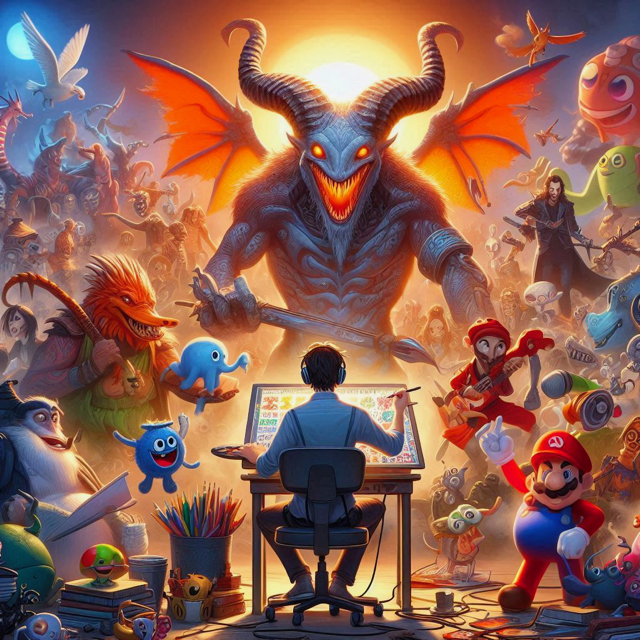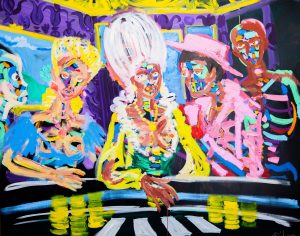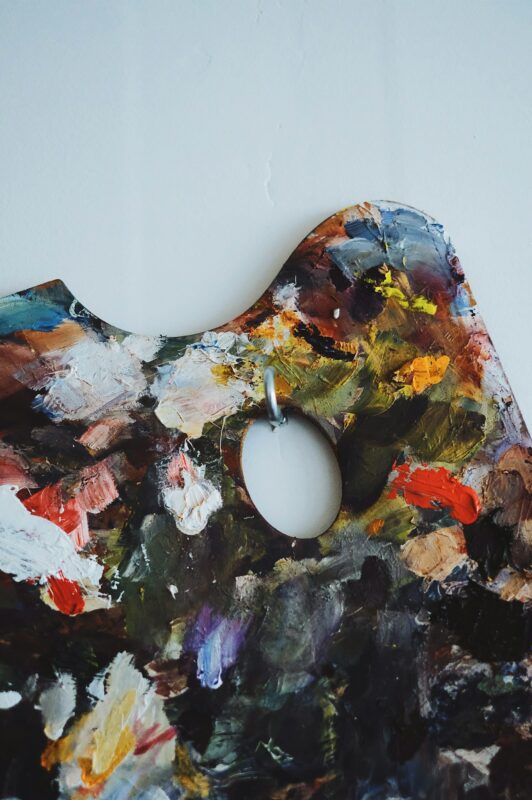
Augmented reality (AR) is revolutionizing several industries, including both modern art exhibitions and online gaming. This innovative technology fuses the physical world with digital content, creating immersive experiences that captivate audiences. From enhancing artistic expression to boosting visitor engagement, AR is a game-changer.
In art, museums and galleries are constantly seeking new ways to engage visitors. One such method sees the incorporation of AR technology for various interactive experiences.
Imagine walking through an exhibit where historical figures come to life or sculptures reveal their hidden stories as you approach. Similarly, in the realm of online gaming, AR introduces elements that go beyond the screen, transforming ordinary playing environments into extraordinary adventures. A fascinating example is blackjack online at Betiton, which incorporates augmented elements to create more engaging gameplay.
Betiton Casino: Bridging Art and Gaming with Augmented Reality
Betiton Casino stands out not just for its wide range of games but also for integrating modern augmentations into their platform. By merging the thrills of traditional casino games with the advancements of AR, they offer unique experiences that blur the line between the real and virtual worlds.
For instance, playing blackjack online at Betiton can now be enhanced with augmented features, delivering an interactive gaming experience. Players might find themselves dealing with holographic cards or interacting with avatars that respond dynamically to their decisions. Such integrations keep gameplay fresh and exciting, extending beyond mere visual appeal.
Augmented Reality in Art Exhibitions
Art has always been about pushing boundaries, and AR gives artists and curators another tool to experiment with. Through AR applications, exhibitions can provide unprecedented levels of interactivity and educational value. This helps not only to attract younger audiences but also to deepen the understanding and appreciation of the artworks on display.
Visitor Engagement in Museums and Galleries
Museums and galleries leverage AR to enhance visitor engagement significantly. Features like digital content overlay allow institutions to convey additional layers of information without distracting from the primary exhibits. For example, an antique painting could have annotations visible through an AR app, explaining the techniques used by the artist or historical context behind the work.
Furthermore, AR transforms static displays into interactive experiences. Imagine a museum visit where visitors point their phones at artifacts and get a 3D simulation that depicts how those items were used in history. This combination of physical and digital integration enriches the visitor’s journey, making every element more memorable and impactful.
Augmented Reality vs. Virtual Reality in Art and Gaming
While augmented reality enhances the physical environment by overlaying digital objects onto it, virtual reality (VR) creates entirely immersive digital realms separate from the real world. Both have roles to play in art and gaming, but AR takes the lead when it comes to blending the physical and digital seamlessly.
In art, VR offers fully constructed experiences that immerse users in alternate worlds, which can disconnect them from tangible works present in the same space. However, AR provides added context and dimension while keeping users grounded in reality. Visitors can enjoy paintings or installations more deeply thanks to this technological enhancement.
- Educational Value: AR can add layers of information to physical exhibits, enriching the learning experience.
- Interactive Experiences: Transform passive viewing into active participation by incorporating dynamic elements.
- Enhanced Visitor Engagement: Boosts interaction, holding attention, and fostering a deeper connection to the artwork.
Regarding gaming, AR integrates gameplay into the player’s environment, bringing characters and actions into their living space. In contrast, VR isolates players in a fully digital setting. Thus, whether it’s artistic or playful, AR contributes to a myriad of creative applications within our current reality.
Designing for Augmented Reality Experiences
Creating effective AR experiences requires thoughtful design, particularly considering user interface and user experience. An intuitive design ensures the tech isn’t just a novelty but a valuable addition. Usability and accessibility should be prioritized so that everyone—from novice users to tech enthusiasts—can benefit equally.
Technology in Art: New Tools for Creativity
The adoption of AR in art introduces fresh possibilities for creativity. Artists can use AR to tell stories in new ways, combining traditional mediums with digital enhancements. It also allows for iterative designs; artists can preview modifications in real-time before committing to a final piece.
Curators can rethink the layout and narrative flow of exhibitions by incorporating AR elements strategically. Suddenly, walls become canvases displaying animated sequences or responding to user interactions. This empowers both artists and exhibitors to continuously push boundaries.
Physical and Digital Integration
Successful AR design hinges on flawless integration of physical and digital spaces. The aim is to amplify what is already there, not overshadow it. This means considering factors like spatial awareness, object tracking, and seamless content alignment to the user’s viewpoint.
For artists, this hybrid approach presents revolutionary opportunities. Physical art pieces gain new life through digital animations or additional narrative threads, all accessible via personal devices. This practice highlights how interconnected our physical surroundings can become with the proper technology in art perfectly aligned with viewer context.
The Future of AR in Art and Gaming
The potential future applications of AR in both art and gaming are limitless. Continued advancements will further erase the divide between real and virtual, opening avenues for even more compelling and immersive experiences.
We might see entirely AR-focused exhibitions or games where the entire storyline unfolds through augmented overlays. As technology improves, so does its ability to provide richer, more layered interactions. Museums, galleries, and online gaming platforms continue to innovate, promising a visually and intellectually stimulating future for augmented reality in these sectors.
Educational Value and Artistic Expression
The educational potential of AR in art cannot be overstated. It transforms passive learning into an active quest for knowledge, thereby increasing retention and enjoyment. Visitors don’t just see art; they interact with it, gaining insights directly from their experiences.
The blend of artistic expression and educational value becomes apparent as learners navigate these enriched environments. Whether deciphering ancient scripts or watching a masterpiece’s creation process unfold digitally, AR makes education captivating and multidisciplinary.
AR in online gaming pushes similar boundaries. Educational games using AR can present puzzles and challenges embedded in the player’s environment, promoting learning through exploration and discovery. Even non-educational games benefit from these mechanics, providing deeper storylines and complex, more engaging gameplay.
Although this article omits traditional conclusions, it’s evident that AR holds significant promise for art and gaming. As we explore its capacities, we uncover ways to make art more accessible and games more engaging. From museums and galleries enhancing visitor engagement to casinos like Betiton transforming online gaming, the journey augmented reality offers is full of exciting turns and unprecedented opportunities.







